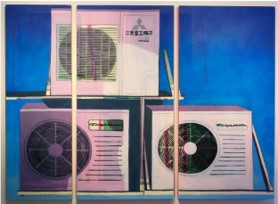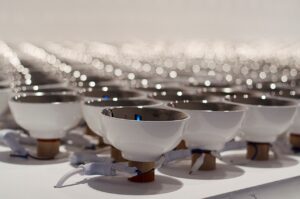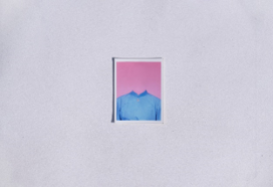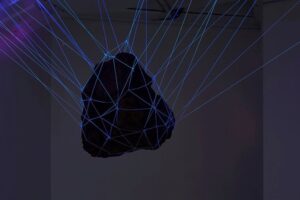Fine Art Studios
This page will assist you with a list of potential class offerings for Fine Art Studio 2 (VART 3695) and Fine Art Studio 4 (VART 3697) under Bachelor of Arts (Fine Art) Hong Kong program in Semester 2.
(Note: There is a separate page for Workshop classes.)
You will only take one Fine Art Studio class in semester 2, but you need to list three (3) preferences. These Fine Art Studios will be for both first and second year students and will be offered under the following course codes:
Year 1: Fine Art Studio 2 (VART 3695)
Year 2: Fine Art Studio 4 (VART 3697)
These Fine Art Studio classes are 24 credit point courses and will require 6 contact hours per week plus associated learner directed hours.
The preferencing process will be communicated to you by Hong Kong Art School in due course.
For more information about a course, and/or to seek academic advice from your specialisation coordinator prior to deciding, please contact Hong Kong Art School.
IMPORTANT - PLEASE NOTE: You must not repeat any class in your preference lists. Every effort will be made to place you in your first preference classes. Selected classes would be offering in each year, please refer to class information provided by Hong Kong Art School for details. Although we would like to offer all of the options below, classes are subject to viability and may not run if numbers are too low.
Course Information

Stephanie Sin, Apliu Outdoor Units 01, 2016
Abstract Practices

Joe Chan, Ming Jing, 2015
Ceramic Vessel as an Expression
This course explores on building contemporary ceramic vessel and how the vessel enhance inner personal expression and responds to outer environment. Students will learn and practice different ceramic forming techniques and surface finishes in relationship to their concepts and ideas. The course also takes into account contextualizing issues around form and function in historical and contemporary ceramics.
Recommend to Year 1 Ceramics students

Rebeka Tam, Collapsing Series, 2020
Ceramic Art and Architecture, Moulding and Variations
In this course you will learn and practice building architectural form. You will explore the physical properties of different clay with various additives. Moulding skill will be introduced and enhanced (for experienced students) and apply to make objects relevant to the idea of architecture in nature and the man-made world. Relevant surface treatment technique will be introduced. Conceptual and aesthetic concerns will be addressed to assist you to develop an individual approach to object forming relates to sculptural and architectural forms.
Recommend to Year 2 Ceramics students

Paul Yeung, I met you somewhere
Human Presence, Representation: Theory & Practice

Virginia Lo, Night Drive
Painting Diversification
In this course you will develop your own unique studio practice in relationship to the expanded field of painting that may include painting, collage, works on paper, the object and installation. You will experience new strategies for generating ideas and stimulating your imagination, that lead to the development of a flexible studio work proposal that is sustainable and research focused to your own individual ideas. Themes in contemporary art will be investigated to demonstrate how artists initiate, expand and maximise outputs through experimentation and research. Ideas may include: the body, nature, abstraction, materiality, colour, chance, series, memory, the known and the unknown. You will identify your field of practice and participate in an Exhibition Project where you will curate, exhibit, critique and document your work in a collaborative group exhibition. This will provide valuable information and experience in exhibition practice, gallery installation strategies and professional practice that will prepare you for a career in the arts industry.
You will experience individual tutorials, peer-to-peer discussion and group feedback sessions, field trips to local museums, demonstrations and health and safety; experiences that will enrich and sustain your continued development as artists in a supportive and stimulating environment.

Jaffa Lam, Birth Rock (From installation: Tin Hau is coming for a piece of water), 2018 (Volcano Rock, thread, UV light, 35 x 40 x 50 cm, Artist’s own weight)
Sculpture, Nature and the Body
This subject develops knowledge and facility in the study of the human body and aspects of the natural world. It provides practical, technical, interpretive and theoretical methods for studying and translating the human body, flora and fauna, geological structures and a range of other natural forms and phenomena. It will employ standard modelling and plaster casting processes and techniques, and a range of other 3D transformation techniques.
Over the course of the semester a series of practical studio classes, theoretical discussions and projects will address both contemporary and historical perspectives in sculpture as it relates to the body and nature.